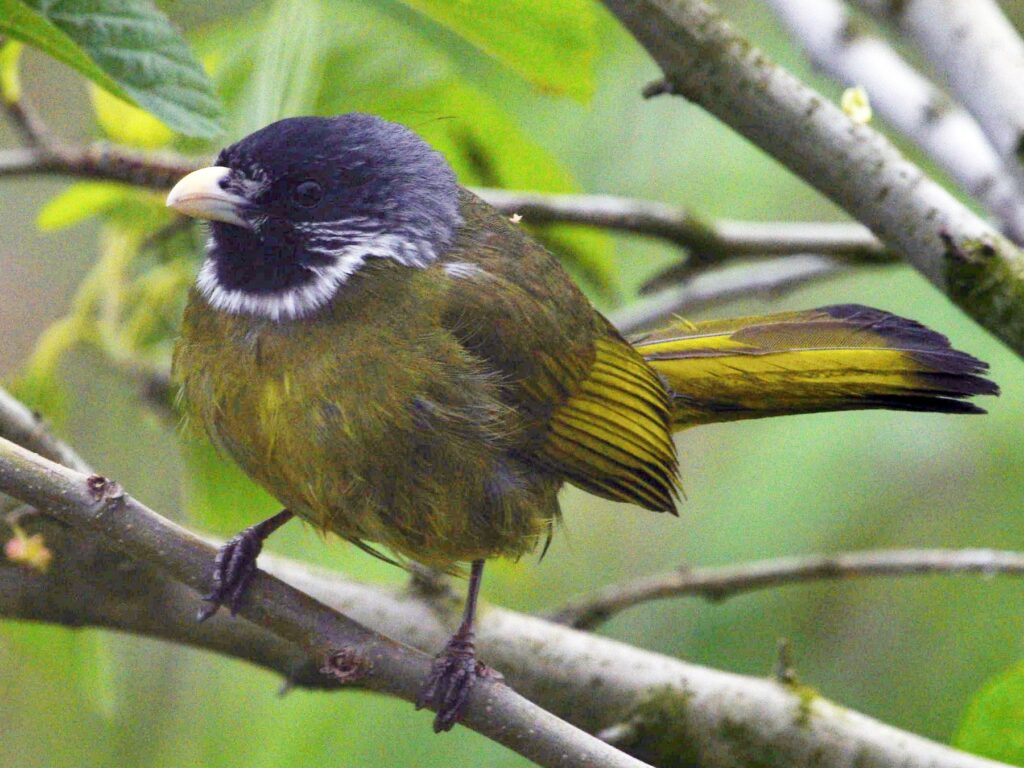ANIMAL: Collared Finchbill Spizixos semitorques Type of Animal: Songbird Habitat: Hill forest, foothill forest, lowland forest, montane forest, temperate forest, subtropical/tropical forest, forest edges, shrubland, gardens, brushlands, bamboo undergrowth, lowland clearings, hillside scrub, scrubland, secondary forest, savanna, urban areas, heavily degraded former forest Location(s): C & E China, N Vietnam, Taiwan, & Miyako & Yaeyama Islands of Japan Appearance: Dark olive-green bird w/ black head, white collar, gray “whiskers”, black-tipped tail, stout slightly curved yellow bill Food/Diet: Fruit, berries, seeds, insects Status in Wild: Stable Conservation: Breeding in zoos & wildlife centers Lifestyle: Flocks of 2-30 birds Additional Info: Called: Male: Cock Female: Hen Young: Chick Group: Flock Weight: Male: 1.58-1.59 oz Female: 1.41 oz Gestation: 2 weeks Life Span: 5-10 years Height: Male: 9 in Female: 7 in Body Length: Male: 9 in Female: 7 in Tail Length: 2-2.5 in, same for both sexes Main predators are snakes, lizards, raptors, corvids, & predatory mammals. Also known as Collared Finch-Billed Bulbul, Black-Headed Finchbill, Chinese Finchbill, Japanese Finchbill, & Swinhoe’s Finch-Billed Bulbul. Song series of three-syllabled warbles. These birds also chirp a lot. Most often breed from March-August. Clutches range from 2-5 eggs. These birds are non-migratory. These birds are rather shy. Chicks fledge at 2 weeks but may stay w/ parents for longer. Coloration aids in camouflage. Nests bowl-shaped, made of dry grasses/stems/leaves/fine roots, usually placed at branch tip. Active during day (diurnal). Fun Fact(s): Scientific name means “half-twisted chirping bulbul.” Nests sometimes parasitized by Himalayan Cuckoos. Named for white collars around necks.

